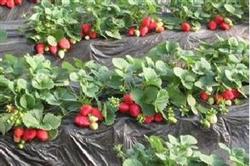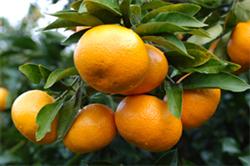Cultivation characteristics of virus-free seedlings of Strawberry

The production and application practice shows that the virus-free strawberry not only grows strongly, the plant is neat and consistent, but also the yield and quality are obviously improved. Compared with virus-infected seedlings, virus-free seedlings increased plant height by 17.7%, leaf area by 2.6%, petiole length by 14.5%, stolon number by 26.7%, harvest by 7.8%, fruit number by 8.7%, fruit weight by 0.67%, fruit weight by 0.67%, and soluble solids content by 3.8%. The growth characteristics of virus-free seedlings are different from those of ordinary seedlings, so the cultivation of virus-free seedlings should be adjusted accordingly in order to increase the yield and improve the quality of virus-free seedlings. The main results are as follows: (1) virus-free seedlings have strong vegetative growth and strong fertilizer absorption, so the topdressing before flower bud differentiation should be avoided in the stage of pseudo-planting, so as to avoid the delay of flower bud differentiation. The flower bud differentiation period can be advanced by adjusting the ratio of carbon to nitrogen by cutting roots and peeling old leaves. (2) the non-toxic seedling field is sturdy and tall, and under the condition of large amount of fertilizer application, the tolerance to strong concentration fertilizer is stronger than that of poisonous seedling. However, the production site should also avoid excessive fertilization, so as not to affect the fruit due to excessive exuberance of the plant. Compared with virus-free seedlings, virus-free seedlings should be sparsely planted. (3) the flowering period of virus-free seedlings tended to be delayed, and the initial harvest time was delayed accordingly, but the early yield and total yield were still higher than those of the control. As the number of fruits per inflorescence increased and the average yield per fruit decreased, moderate thinning of flowers and fruits should be considered to promote the increase of fruit. Botrytis cinerea and leaf blight are easy to occur when the growth is too exuberant, so we should peel off the old diseased leaves as soon as possible, control diseases and insect pests in time, and pay attention to ventilation in the greenhouse when planting in protected areas. (4) the rate of reinfection of virus-free seedlings in the process of production varies with different producing areas and cultivation and management methods. Places with small production scale and frequent control of aphids are still virus-free after two years of cultivation and are only slightly infected in the third year; reinfection often occurs in producing areas with large production scale in a short period of time. In general, it is necessary to use new virus-free mother strains to propagate the production seedlings every 2-3 years, but the original production seedlings should not be reused.
- Prev

How to use bio-organic fertilizer for strawberries
Strawberry is a plant that takes fruit as edible. The fruit is bright red and bright, tender and juicy, sweet and sour palatable, and has high nutritional value. Strawberry is planted in our country from Heilongjiang in the north, Guangdong in the south, Shanghai in the east and * in the west. Strawberry in a year, each organ changes with the season, its physiological function also changes regularly.
- Next

If you want to supplement calcium and eat citrus fruits at the same time
Calcium is easy to combine with oxalic acid, phosphoric acid in vegetables and phytic acid in cereals to form a kind of insoluble compound, which is not easy to absorb; calcium is also easy to combine with fat-decomposing fatty acids to form insoluble substances, affecting the absorption of calcium. Therefore, the best time to supplement calcium is before going to bed or between meals at night, because the blood calcium concentration is later.
Related
- Moge, come on! The staff of the peasant association in the producing area of cantaloupe were frightened when the crowd gathered.
- Causes and Solutions of low Fruit setting rate of Apple
- Symptoms and control measures of passion fruit virus disease
- Fruit growing lesson: how do apple orchards keep high yields?
- Can you build orchards in the mountains? What are the pros and cons?
- How to manage the coloring period of Crisson grape?
- This paper introduces the processing technology of two kinds of fig products.
- How much is a month for retired teachers in rural areas by 2020?
- How can strawberry planting increase sugar content? We should pay attention to management in many aspects.
- What are the cultivation techniques on how to improve the yield of golden fruit?

